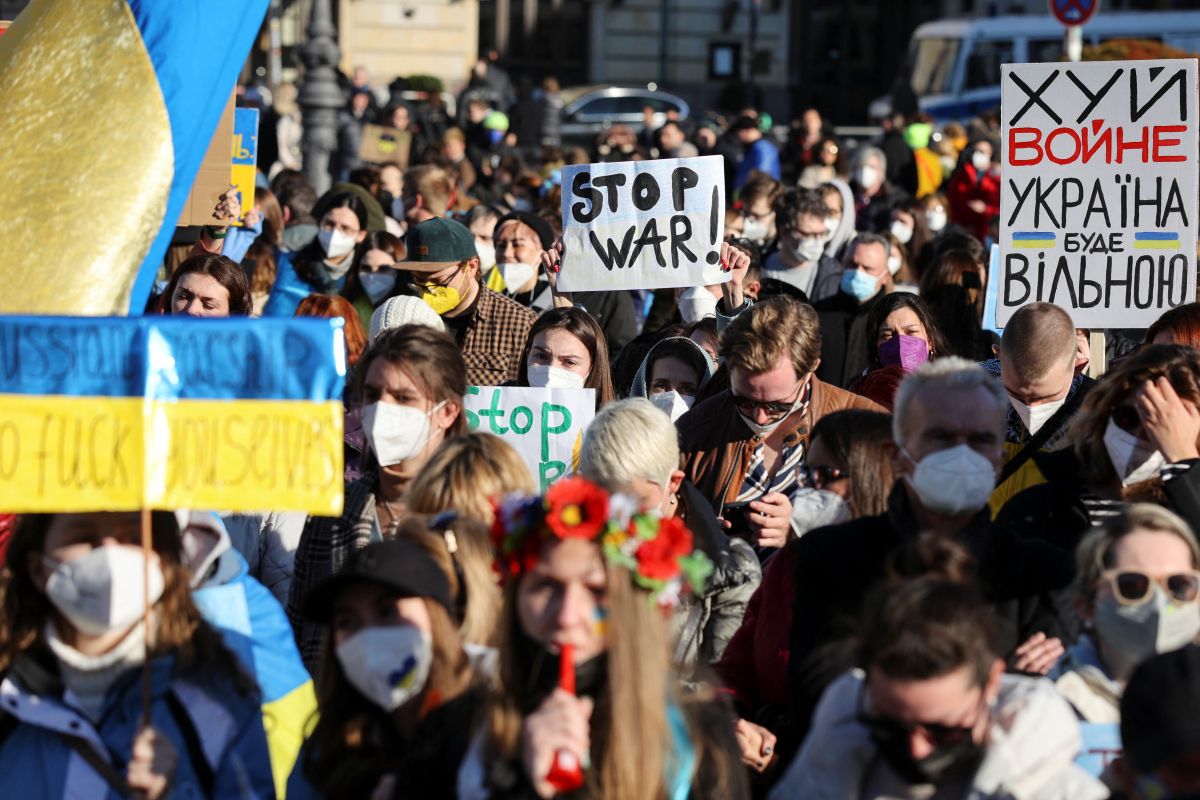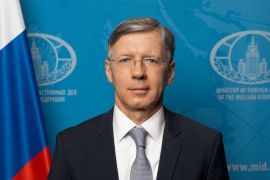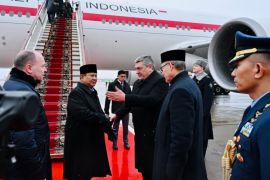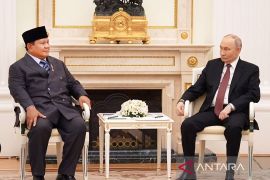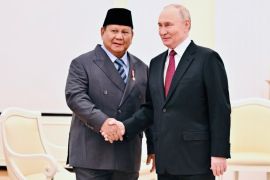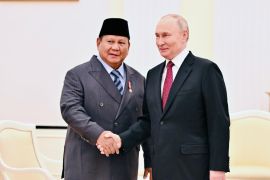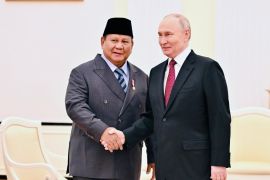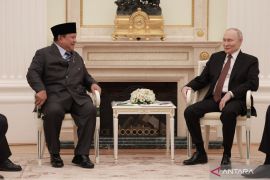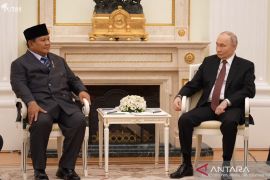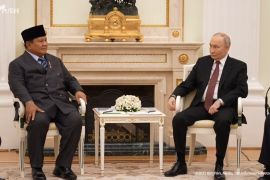The Ukrainian armed forces have not melted away under the Russian firepower. Instead, they have mounted an effective defense, dealing heavy losses to the invading forces and considerably slowing down their advance into Ukraine.
Russia's economy is also being strangled by Western sanctions, and its international position is becoming increasingly isolated.
Suffice to say, Russia's military operation has not resulted in the quick collapse of Ukraine as the Kremlin hoped, but has instead turned into a protracted war highlighted by the lackluster performance of the Russian military. So, why did Russia, which wields one of the strongest militaries in the world, perform poorly in Ukraine?
Related news: Indonesia can act as mediator in Russia-Ukraine conflict: expert
Bad planning
Russia's underwhelming military performance in Ukraine was first and foremost the result of bad planning. Looking at early Russian operations in the war, there are strong indications that Russia has gone into Ukraine expecting a rapid collapse of the country without meeting any significant resistance.
We can see during the first few days of Russia's deployments of airborne and special operations forces deep into the Ukrainian territory without significant support; single units rapidly driving into urban areas without the necessary combined arms support; and the seemingly sparring uses of long-range fires from the artillery and air force.
These conducts do not reflect a military launching a full-scale invasion, but rather they resemble more of a limited-scale operation to quickly seize key locations, such as the capital city, to decapitate the government and to install a puppet regime. All have been conducted without encountering significant organized resistance and with minimal civilian cost. Suffice to say, the Ukrainians quickly proved them wrong, and the invasion that Russia officially launched since February 24, 2022, has now largely stalled on multiple fronts.
Related news: BI lowers global growth forecast due to Russia-Ukraine conflict
Information and propaganda
Faulty information may have played a key part in the terrible planning of Russia's invasion into Ukraine. Recent reports have highlighted a possible failure by the Federal Security Service (FSB), Russia's intelligence agency, to adequately inform the Kremlin of realities on the ground in Ukraine prior to Moscow's invasion.
People in the system may have filtered out bad information in their reports to President Vladimir Vladimirovich Putin, thereby leading to faulty decision making (France 24, March 2022). Another similar view is the possibility of misinterpretation of the available data by decision makers in the Kremlin.
An FSB-commissioned social survey in early February 2022 in Ukraine shows that trust towards the government among members of the Ukrainian population is relatively low.
This piece of information may have been misinterpreted by decision makers as a clear sign of the fragile social and political state of Ukraine, when, in reality, the situation on the ground is more complex, and public perceptions can change very rapidly, especially when faced with a major shift in the social-political environment.
This may have influenced the assumption among Kremlin higher ups that a Russian invasion into Ukraine will not face significant and widespread resistance by the Ukrainian people (Reynolds and Watling, February 2022).
Years of negative propaganda against Ukraine may have also played a part in decision makers within the Kremlin misinterpreting data provided to them. Data may have been consciously or unconsciously selected and interpreted to fit the world view that may have been ingrained within the minds of decision makers. A world view that unfortunately for them has been shaped by years of negative propaganda does not reflect reality.
Logistics and maintenance
As a consequence of the poor planning, Russian operations in Ukraine are now hampered by significant problems, notably with regard to logistics and maintenance. Pictures of abandoned Russian tanks due to fuel shortages and mechanical breakdowns have been widely circulated on the internet.
Videos of Russian soldiers looting supermarkets for food have also surfaced due to reported shortages of food. All of these problems are compounded by the inability of Russian forces to secure their rear areas from ambush by the Ukrainian forces.
Extended supply lines, which rely heavily on main road networks, have made it increasingly difficult for Russia to supply its combat troops on the frontlines.
The inability to secure rear areas have resulted in numerous ambushes by the Ukrainian infantry armed with anti-tank weapons against supply columns transporting precious fuel and ammunition. This is most evident in the Northern and North-Eastern front of the war where extended supply lines, coupled with stubborn Ukrainian defense on the front line and numerous ambushes in the rear, had stalled Russian efforts to encircle the Ukrainian capital of Kyiv.
Related news: Indonesia calibrates policy to handle Ukraine-Russia conflict's impact
The logistical problems faced by Russia go further than those merely related to unpreparedness due to poor planning and stubborn Ukrainian resistance on the ground. The Russian army in itself is not designed to bear the logistical burden of sustaining large-scale military operations far from its borders.
The Russian army is regarded as a rail-based army, meaning its logistical capability relies heavily on railway transport (Vershinin, November 2021). Russian army logistics are not designed to support large-scale land operations far from railroads.
This is not a problem during defensive operations within the Russian territory, as the army will be operating close to railroads and supply depots. However, during offensive operations into foreign territory, Russia may face logistical problems, as its forces advance further and further away from railroads and logistical hubs.
This is clearly seen in Ukraine, notably in the Northern and North-Eastern front, where the Russian logistics have to travel far from logistical depots in Belarus and Western Russia to supply troops fighting around Kyiv. This puts a significant strain on the logistical truck fleet. As we have seen in the past three weeks, the fleet of vehicles are highly vulnerable to interdiction by Ukrainian forces operating in the rear.
Apart from these logistic constraints, the numerous pictures of abandoned military equipment in Ukraine are also indications that the Russian army is facing maintenance and repair problems. The way the Russian army is organized may have contributed to this problem (Gressel, March 2022).
Currently, Russian forces in Ukraine are organized into battalion tactical groups (BTG) -- battalion-sized units comprising tank, mechanized infantry plus supporting artillery and air defense.
Each of the BTGs is accompanied by a detachment of supply trucks for resupply. However, for maintenance and repair, those facilities are usually reserved to brigade and division level formations. As BTGs do not operate with maintenance and repair facilities, they will make servicing vehicles uneasy to repair broken down and abandoned vehicles, as towing them back to repair facilities far in the rear will be too difficult.
Related news: Xi, Widodo discuss G20, Ukraine, high-speed train
Tactical performance
Another notable point in this war is the seemingly poor tactical performance of Russian forces. Videos circulated on the internet have shown cases of Russian army units failing to apply basic combined arms tactics, such as tanks entering urban areas without adequate support from infantry, or military columns advancing seemingly without drone supports. As a result, they become vulnerable to ambushes by the Ukrainian infantry.
Another recent video also shows a Russian-armored column travelling on a road being ambushed by artillery near Kyiv, with reports of the regiment commander being killed in the attack. All of these cases may be an indication of the inadequate training among enlisted soldiers and officers in the Russian armed forces.
This case of inadequate training may also explain why even after three weeks of war, Russia still fails to secure air superiority over Ukraine. At the onset of its invasion into Ukraine, it was widely expected that Russia will leverage its vastly more powerful air force to quickly destroy the Ukrainian air force and air defenses, securing air superiority over Ukraine. However, that certainly has not happened. The inadequate training among Russian air force pilots in large-scale complex air operations may be the reason why its performance in the war has been underwhelming so far (Bronk, March 2022).
Related news: Indonesia to focus on G20 agendas despite Russia-Ukraine conflict
In general, Russian pilots train less frequently than their western counterparts, averaging at around 100 flight hours per year as compared to 200 flight hours for NATO pilots. They also have access to less advanced training facilities and exercises, unlike NATO pilots, who have access to a wide range of training facilities spread over member countries. Moreover, the NATO pilots regularly participate in advanced air combat trainings, such as the American Red Flag exercise.
All of the deficiency in training may have weakened the Russian air force's capability to execute complex air operations over Ukraine, such as suppression and destruction of the Ukrainian air defenses.
Unless Russia can find a solution to a variety of hurdles as described above, including those related to logistical problems, and the ability to adapt their forces to the battlefield conditions in Ukraine, it is uncertain how Russia will be able to achieve its objectives in Ukraine.
*M. Teguh Ariffaiz Nasution is a graduate of the University of Indonesia's International Relations Department.
The views and opinions expressed on this page are those of the author, and do not necessarily reflect the official policy or position of ANTARA News Agency.
Related news: Time to make G20 more accessible to grassroots: SOEs Ministry
Related news: Minister forecasts surge in passengers to Mandalika from today onwards
Copyright © ANTARA 2022
